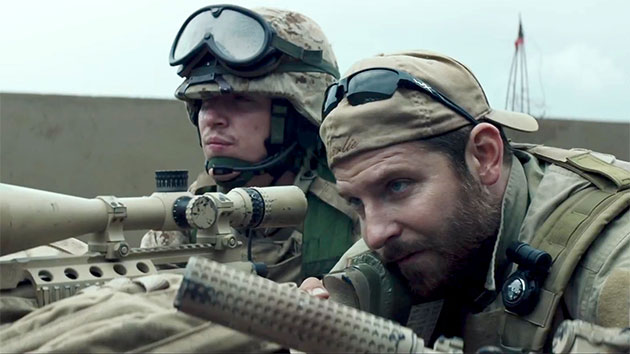Advice from Robert Surtees, Working Quickly but Carefully, and Not Dwelling on Your Films
A highlight of this week's NAB Conference was an appearance by cinematographer Tom Stern, ASC, AFC, who was interviewed on stage by ICG Magazine Executive Editor David Geffner. Stern first worked with Clint Eastwood in 1982, as a gaffer on the director's Honkytonk Man, and graduated to DP on the director's 2002 film, Blood Work. Their most recent collaboration was last year's box-office smash and Oscar nominee American Sniper. Responding to questions from Geffner and the audience, Stern offered some glimpses into his own thought process — and some insight into Eastwood's working methods.
Early in the discussion, Stern remembered working with the legendary DP Conrad Hall, ASC (on American Beauty and Road to Perdition). He also remembered Honkytonk Man cinematographer Bruce Surtrees, who would sometimes take advice from his father, Robert Surtees, ASC. When a lighting setup wasn't working, the elder Surtees advised dropping the set into complete darkness, then turning on one light. When the one light is doing exactly what you want it to do, Surtees told his son, then you may continue. "Oftentimes, I normally follow Robert Surtees' advice of starting out with one light," Stern said. "And a lot of times, that is enough."
Eastwood is known for working quickly, and Stern says that's partly because he's not fussy about capturing variations on performances. "A lot of the time we'll shoot the rehearsal," he said, "and a lot of times we'll put the rehearsal [in the film]. 30 to 40 percent of shots in any film, there was one take and that's the take you're looking at." Despite the fast pace, he noted, the results generally speak for themselves. "Letters from Iwo Jima is 33 days to a Best Picture nomination, which is a terrible thing for a DP to admit, because we get paid by the week."
Asked about color grading, Stern says he never "gets too fancy" with a film negative or digital intermediate, but he notes that it was digital timing that gave Letters from Iwo Jima its distinctive, nearly monochromatic look. "If you were to do a contact print of Letters from Iwo Jima, it would look like The Sound of Music. It's a really fat negative, so it should last a long time." Moreover, trust between Stern and Eastwood is so strong that the director does not sit in on Stern's DI sessions.
But that doesn't mean Stern does whatever he likes. He knows that he's taking marching orders from his collaborators. "Before I use a filter, there is a discussion with Clint and his editor, who is a huge filterphobe," he says. "We never use any filtration." What makes Stern so easygong when it comes to agreeing to the kind of restrictions that would make prima donna DPs bristle? "I'm painting on a $40 million canvas," he says, "and the $40 million isn't mine."
Responding to a question from the audience about whether Eastwood, an actor himself, puts actors in the position of greatest importance on set, he cracked, to a huge gale of laughter, "Categorically, after having worked with him for over 38 years, he's never given a shit about my problems."
Stern said last year's American Sniper was Eastwood's second film shot with the Alexa. "He loves the fact that we can shoot 27 minutes on Codex,"Stern said. "He likes not having the [film] magazine changes, mainly."
What else contributed to Eastwood's digital transition? "It's getting harder to get camera negative," Stern said. "We were shooting with the Alexa with Panavision anamorphic lenses [capturing] full-frame ARRIRAW, while the film thing was getting less stable. We had been using Fujifilm for a while, and Fuji quit. Film was getting less robust, and digital was getting more robust."
An audience member who was an extra in Eastwood's 2008 film Changeling remembered hearing the director growl quietly on set, "You mean that shadow will keep me out of Sundance?" and asked what that comment was about. Stern said it was part of a long-running joke about Eastwood's complete indifference to festival plaudits and the like. "He's not making films to win awards. He's making them to express his point of view, and for the audience to engage with," Stern said.
Asked which shots from films he has shot make him most proud, he responded, only half-joking, "Every movie I've done is a failure." By way of explanation, he remembered a time when Conrad Hall was suicidally depressed over American Beauty, which Hall apparently thought had turned out poorly. (It went on to win Oscars for Best Picture and Best Cinematography.) But he did say that he doesn't dwell on his own work, claiming that after finishing the DI, he hits "reboot."
"Normally," he said, "I'll never see the film again."
Crafts: Shooting
Sections: Creativity
Topics: Feature bruce surtees clint eastwood conrad hall nab 2015 robert surtees tom stern
Did you enjoy this article? Sign up to receive the StudioDaily Fix eletter containing the latest stories, including news, videos, interviews, reviews and more.










Leave a Reply